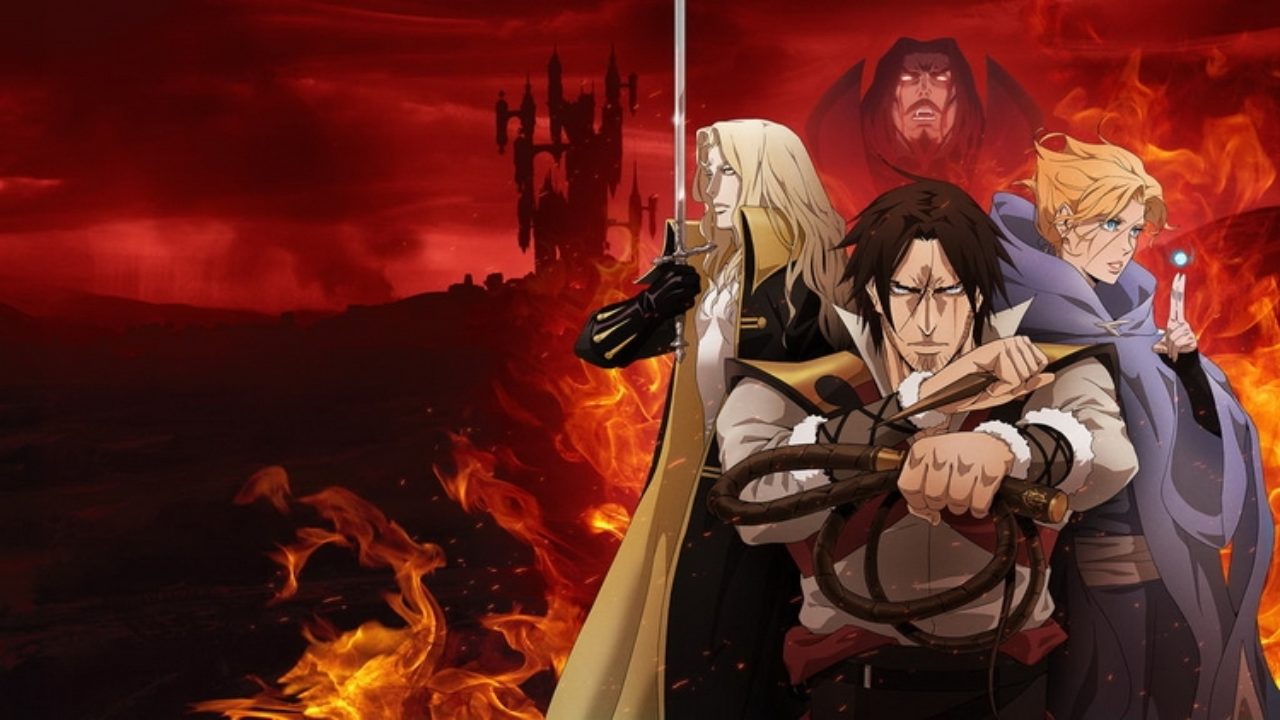As we’ve established in the past, there aren’t a lot of good video game adaptations out there. Let alone, great ones. Video Game films have failed to step up to the plate in representing their source material well. They’re either seen as pieces of ironic comedies or pathetic cash grabs by studios trying to capitalize off gaming culture. Recently, though, Netflix has been killing it with their video game based TV series with The Witcher and Castlevania. A little over a week ago, Castlevania‘s third season has dropped and it is nothing short of phenomenal. I might even go so far as to say that it sets the insanely high bar that television and film adaptations should strive to reach. Some may write off the series as merely a rather successful fluke. Some may say that the show was simply making an already strong, pre-existing narrative within the games more palatable for new viewers. They would be dead wrong, however!

Embedded within the show’s DNA isn’t simply the games’ cast of interesting characters and stories. The series seamlessly integrates game mechanics, callbacks and even freaking modern quest structure to create an experience unlike any other seen before.
Plot and Players
Throughout the Castlevania game franchise, there have been multiple heroes and Belmonts that have featured in various instalments as the main protagonists. Netflix’s Castlevania by Adi Shankar focuses mainly on the three playable characters from the game Castlevania III: Dracula’s Curse. The plot of the game follows Trevor Belmont, a famed monster hunter called upon by the Church to hunt down and kill Dracula. Throughout the game, Belmont recruits several allies along the way: a sorceress named Sypha Belnades and Dracula’s half-human, half-vampire son Alucard. There’s also a pirate named Grant Danasty but seeing that he didn’t make it into the series, we won’t be discussing him.
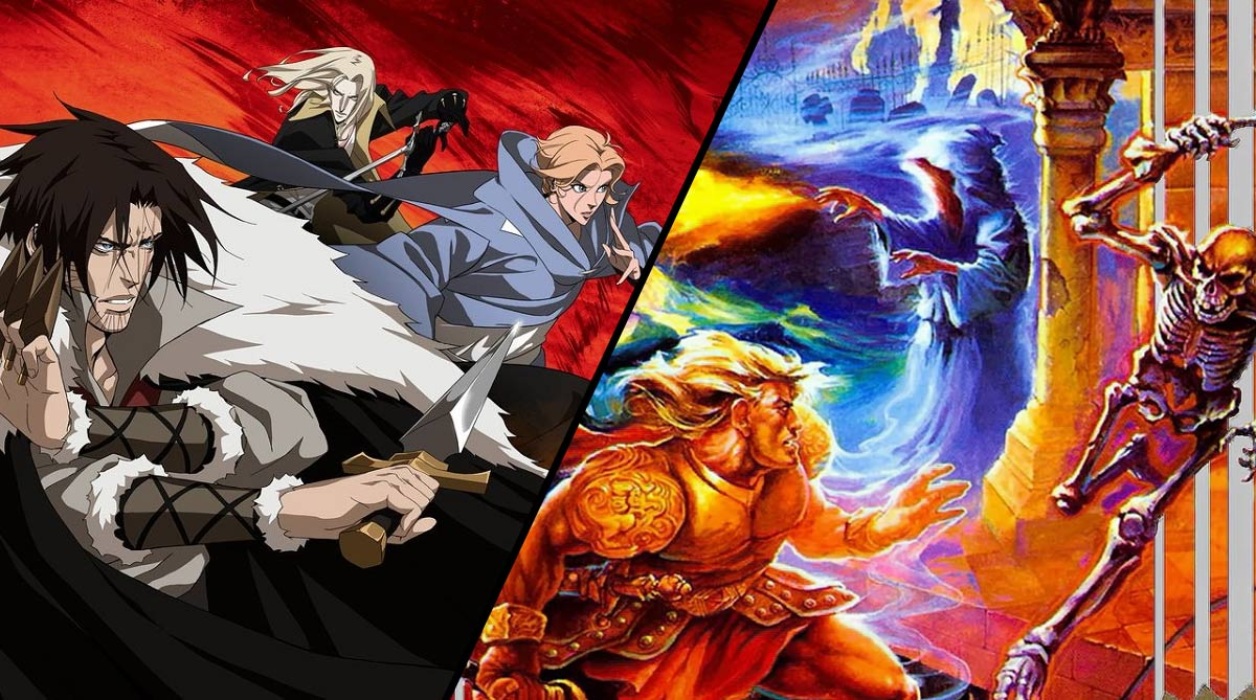
Looking back at the questline of Dracula’s Curse in light of Netflix’s series, it’s clear to see that Shankar and company truly took the game to heart. And I’m not just talking about cheap fan-service cameos or superficial visual cues. I mean that Dracula’s Curse is the inspiration of the first two seasons of the show in nearly every single way! In the first episode of the first season “Witchbottle”, we’re introduced to the existential threat to humanity that is Vlad Dracula Tepes and his dark crusade to scour the Earth of man.
Near the end of the episode, we get our first glimpse of a lonely Trevor Belmont in a tavern, overhearing the horrors wrought upon by Dracula. Then in the second episode, we see him aiding a group of peaceful, nomadic magic users called Speakers in finding their Elder’s daughter, Sypha Belnades. The third sees him agreeing to protect Sypha and her people from the Church in Gresit trying to kill them.
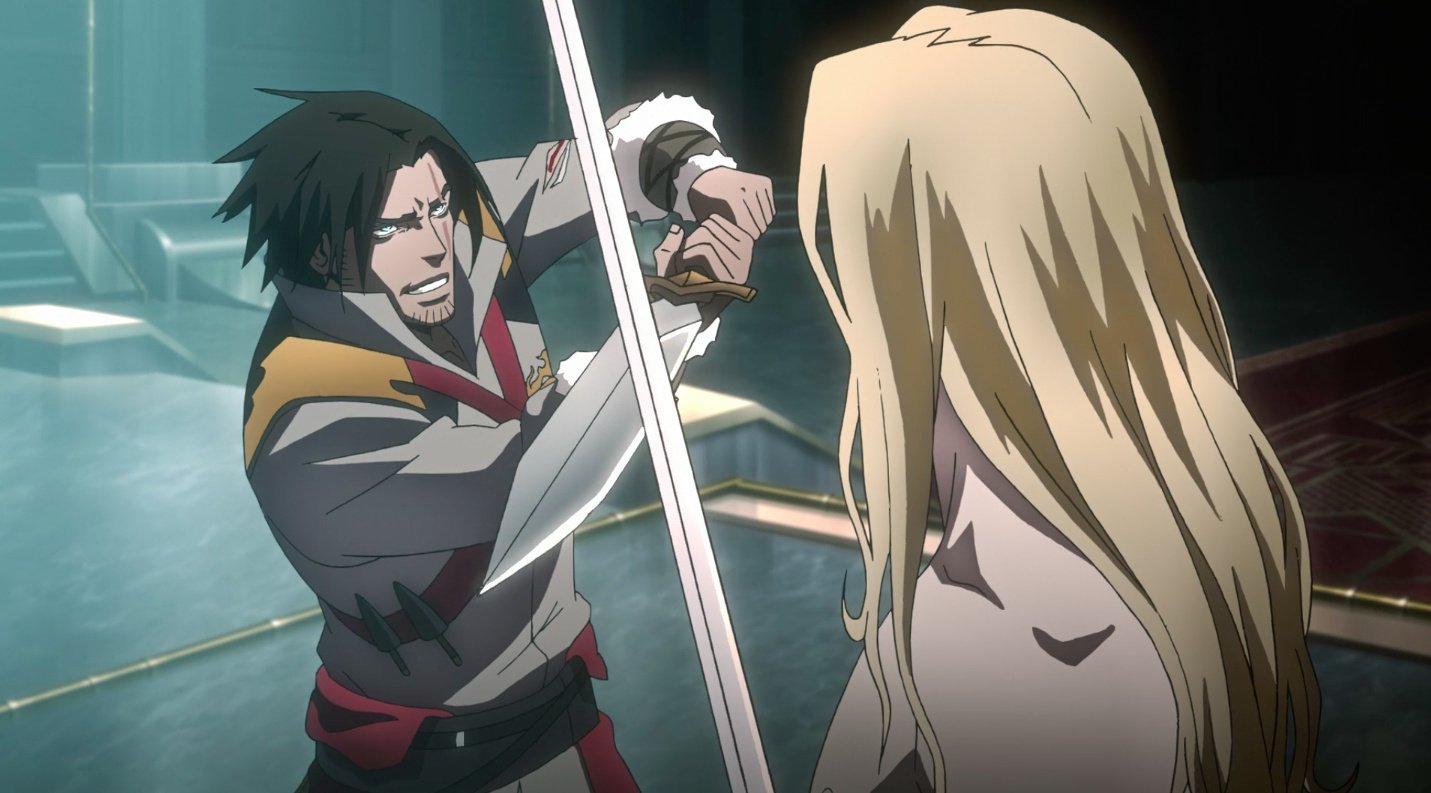
The fourth has the two of them battling against the Church and Dracula’s horde before stumbling upon Alucard beneath the depths of Gresit and waking him up to aid them in their battle. We see in the series that Shankar used the first season, consisting of only four episodes, to simply set up the “playable” characters. With great economy, he has managed to establish a pressing plot, a memorable cast of heroes and villains, and the game’s signature grim, gothic atmosphere.
As I’ve stated in the past, the problem with some video game films is that they attempt to truncate or compress the entirety of a game’s plot into a little over 2 hours. Shankar’s first season of Castlevania, on the other hand, doesn’t bother rushing through the plot of Dracula’s Curse. Instead, the show is allowed to breathe and organically progress. This could have possibly presented another problem with the series coming off as slow-paced, predictable or meandering. That easily could have been the case if not for Warren Ellis’ writing.
For those unaware of Warren Ellis oeuvre, he is easily one of the most talented writers in the world of comics. In books like Transmetropolitan and Marvel’s Ruins, you can see Ellis’ distinctly sharp style of writing. Ellis doesn’t shy away from scathing critiques of politics, social structure and religion. He’s also known for crafting hilariously vulgar dialogue and morally compromised heroes. In Netflix’s Castlevania, Ellis is firing on all cylinders. The man doesn’t waste any time in introducing us to Castlevania’s strange and cruel world full of religious bigotry, fearsome monsters and damaged individuals.
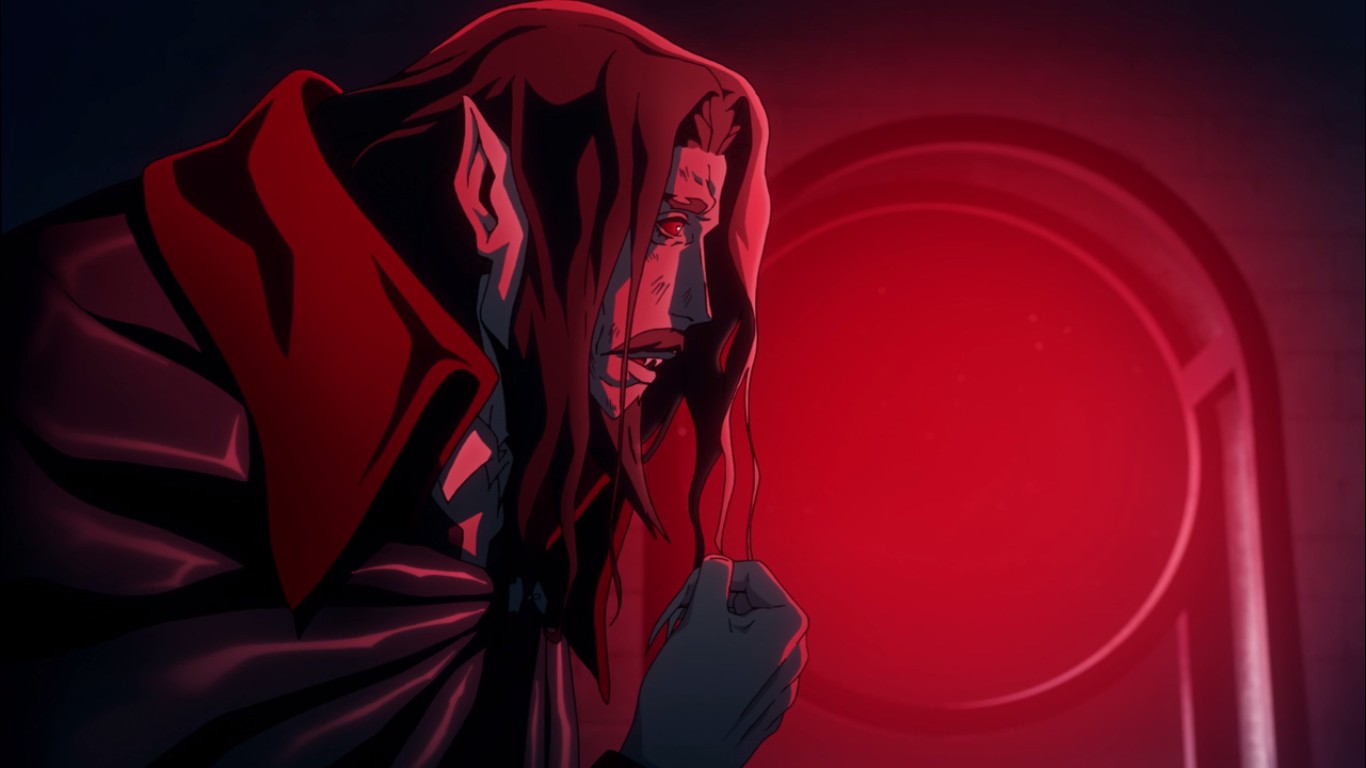
Dracula isn’t some mustachio-twirling baddie. He once offered his knowledge and friendship to man through his human wife but they instead burnt her for witchcraft. From then on, we’re conflicted over Dracula’s tragic past and his horrific actions. A complex pathos that was noticeably missing from Dracula’s Curse. Ellis uses the show’s length to breathe life and personality into each and every character, making every moment of the show feel significant. Yes, even the downtimes. I would be remiss however if I merely attributed the show’s quality to Ellis’ writing. Another contributing factor that plays a part in Castlevania’s rousing success is its visuals.
Of Castles and Combat
In the first season of the series, there were a number of impressive action set-pieces, namely Trevor and Sypha’s battle with the forces of Hell in Gresit. However, we see the series hit its prime in the second season of Castlevania. Director Sam Deats, Adam Deats and Spencer Wan alongside a fantastic team of animators deliver some of the best-animated fight scenes ever put to screen. The craziest part of it all is that it lifts cues right out of the game itself. Within the gameplay of Dracula Curse, players are allowed to swap out between different characters that they feel best suit their playstyle.
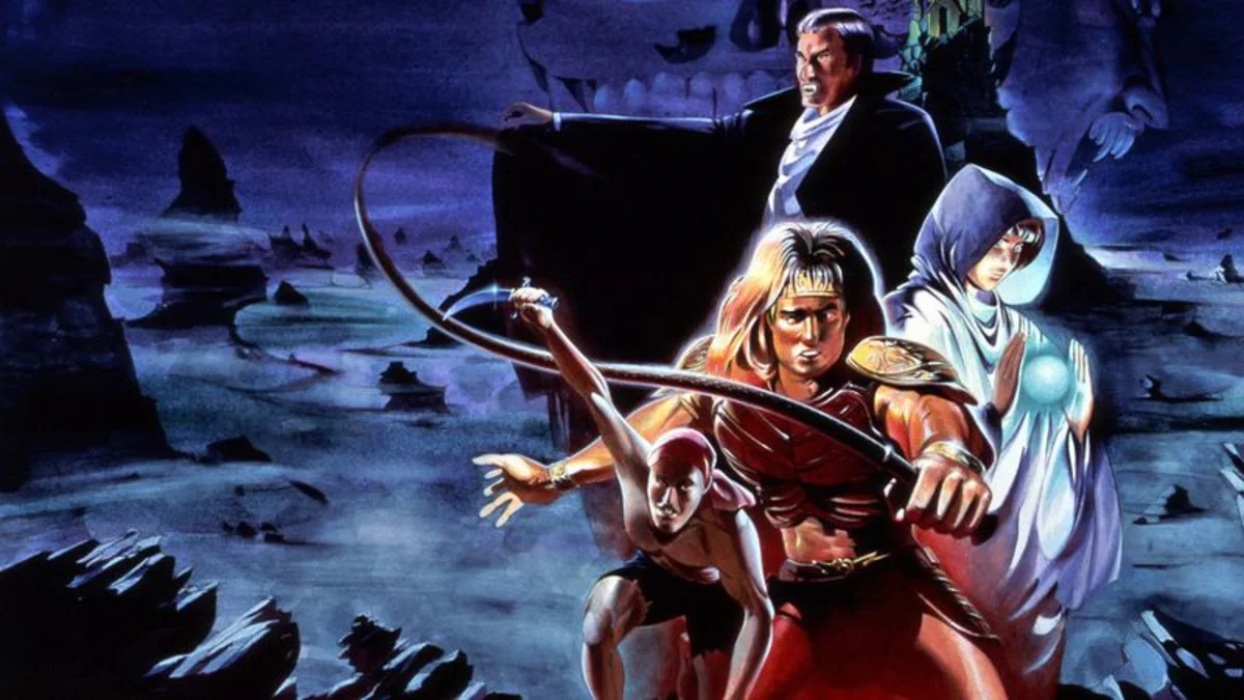
If you wanted a medium-range melee brawler, you’d gone with Trevor and his signature Morning Star whip. Alucard could use magical spells, launch fireballs and transform into a bat. Sypha had stronger range and magical attacks but was weaker in melee combat compared to the other two. Throughout the second season of the show, we see the three of them work in tandem to take down a whole host of baddies in jaw-dropping and innovative ways. The directors on board didn’t simply settle for fistfights or fencing matches with the occasional twinkle. No, they lovingly crafted a distinct fighting style for each of their three characters.
In Trevor, we see his acrobatic prowess and battle-hardened proficiency with his whip as he jumps and dashes across the field to deliver deadly blows. Sypha uses her magical abilities manipulates her surroundings to her advantage, seeing that she doesn’t exactly have the strongest physique. She can conjure ice spikes from water vapour and control the flow of fire for devastating effect. Though Alucard’s abilities have been somewhat altered for the series, his distinct fighting style is still in keeping with his character. He is able to summon and levitate his sword at will, and can even transform himself into a fearsome white wolf.

To see the three lay waste to Dracula’s Night Creatures is a thing of beauty but none of it comes close to the battle at Dracula’s Castle in the second season’s penultimate episode “For Love”. The three of them show up at Dracula’s Castle and proceed to kick the everloving shit out of every bloody vampire on sight! Nothing best describes the scene than a line Trevor delivers before the battle begins: I terrify them. Sypha disorients them. Alucard goes over the top and we support him. Which is exactly what happened on screen.
Those who have experienced playing co-op games may know the rapturous ecstasy of pulling off a team combo on a wave of grunts or in a major boss battle. The siege of Dracula’s Castle is as close as a non-video game medium comes to replicating that thrill. Watching Trevor wreck through wave after wave of vampiric soldiers as Sypha incinerates and impales them alongside Alucard viciously gutting them as a wolf brought tears to my eye. There were only two words I could muster after the whole affair: combo kill.
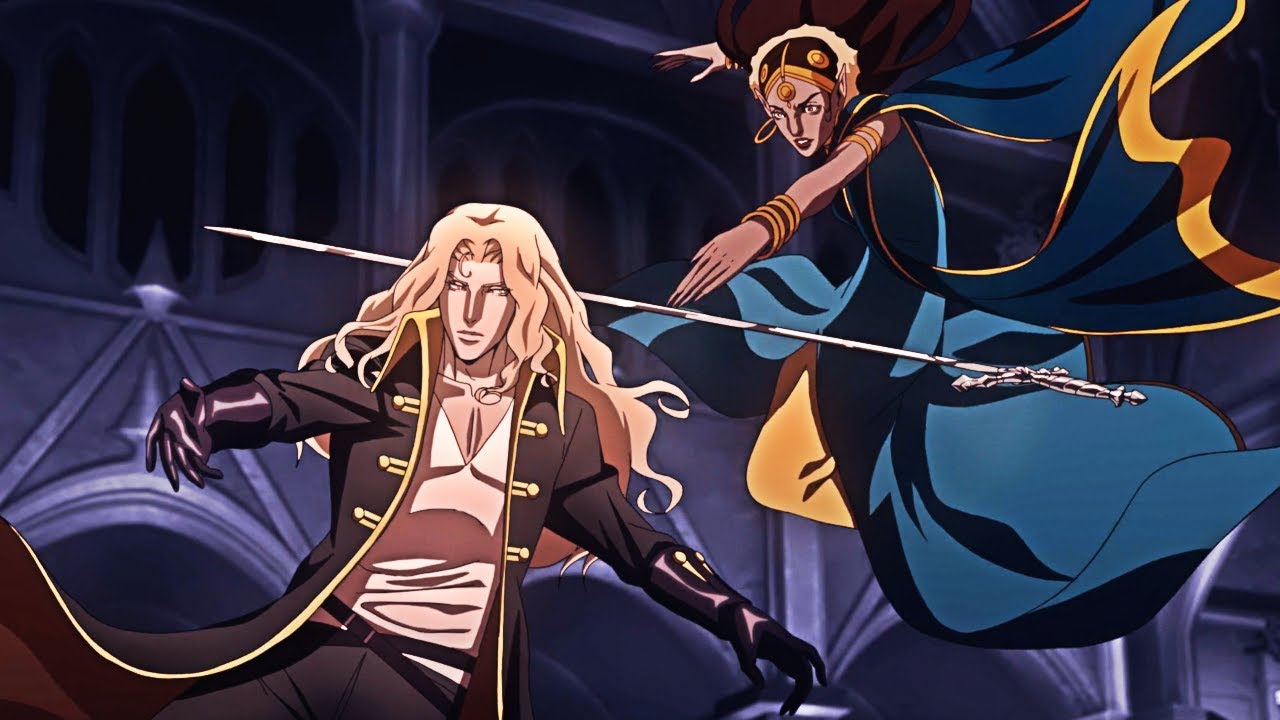
It’s just so utterly refreshing to see a video game adaptation take its source material so seriously. Castlevania is not only a shining testament to the legacy of its video game property but a major step in the right direction for future video game film and television adaptations. It nailed the franchise’s gothic setting, expanded upon its lore and characters, and has done justice to game mechanics. This second season has done more for the credibility of video game adaptations than 20 years of mediocre to poor films could have ever accomplished. I honestly didn’t think the show could get any better. I was wrong.
Season 3’s Side Quest and DLC
At the end of the second season, our three heroes have capably defeated Dracula. The dual-season long quest to beat the main baddie is over…what now? If you have ever found yourself finishing the main quests of RPGs way before completing every single one of the side quests, this question may seem familiar to you. Fortunately, a handful of excellent games such as The Witcher: The Wild Hunt and The Elder Scrolls: Skyrim are more than ready to answer those questions. I’m not merely talking about quantity, mind you. I mean legitimately engaging missions, admittedly smaller in scale, that are used to explore specific characters and even introduce some new ones into the mix. The best way to describe the third season of Castlevania is as a series of side quests.
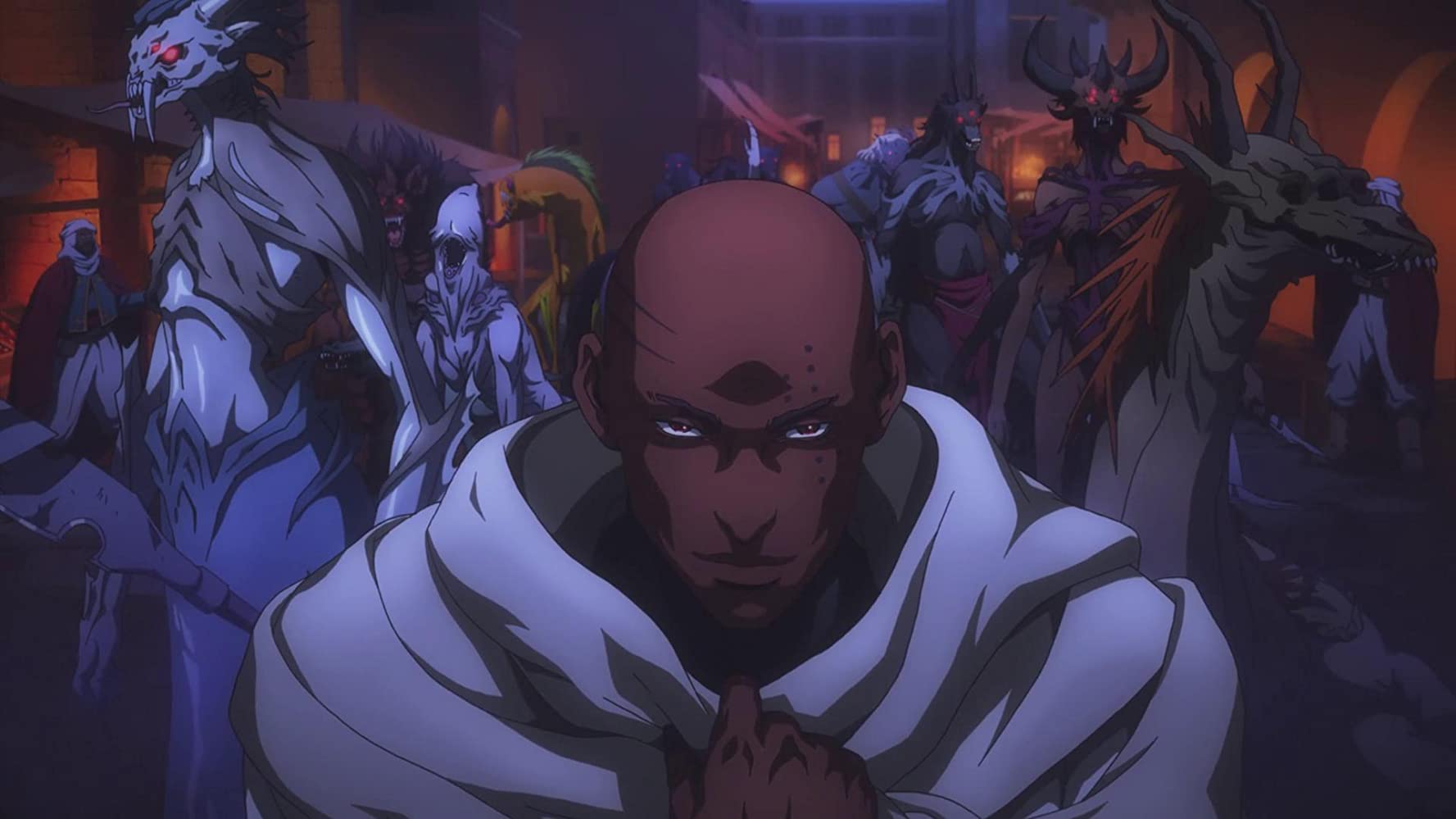
By all means, it sounds like it has the potential to be a jumbled incoherent mess that has neither focus nor reason to be. Somehow, against all odds, it isn’t. In fact, it’s actually quite amazing! Some of the more interesting minor characters we see in the second season get a chance to truly shine and come into their own here. The Demon Forgemaster Issac, in particular, is the true star of the season.
We’ve seen his tragic backstory from abused slave to Dracula’s favoured human lieutenant in the previous season. Now, he’s on his own with the ability to raise an army from Hell. Seeing him develop from loyal lieutenant to burgeoning warlord of Hell’s army outside of Trevor, Sypha and Alucard’s peripheral felt both equal parts intimate and exciting.
Video game titles often have Downloadable Content (DLC) which are additional mini-campaigns that add new dimensions or present fresh context to the greater game plot. DLC in the past has also been used to set up future game instalments as seen in games like Dishonored’s “Witches of Brigmore” DLC and Dragon Age II’s “Legacy” expansion. This entire season feels like DLC in the best way possible! After the madness of the second season, the show switches gears and takes its time to tell richer, more personal stories which seem to foretell of greater battles ahead.
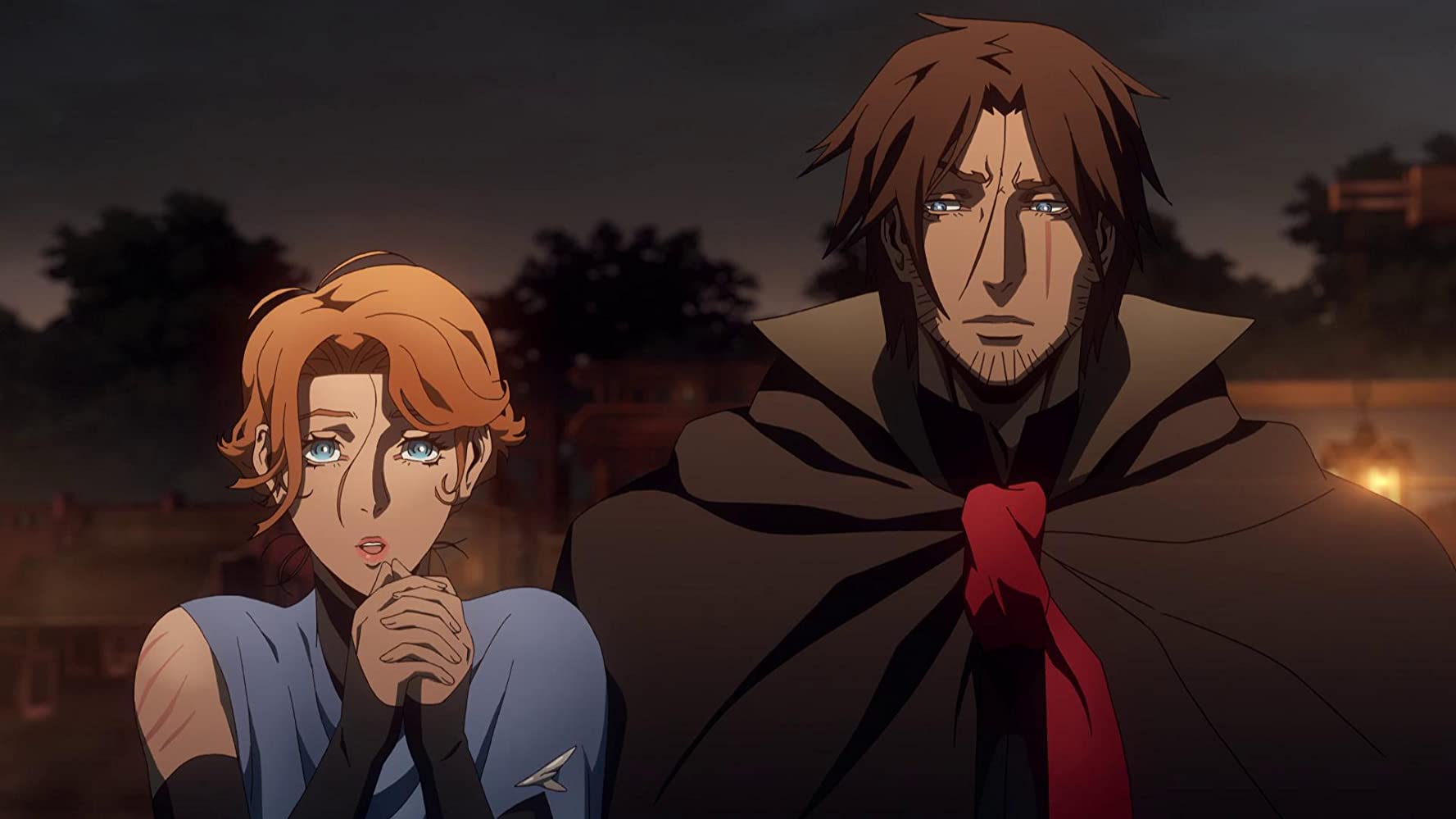
Trevor and Sypha’s monster hunting honeymoon to the sleepy village of Lindenfeld has them uncovering a sinister plot by a group of mad monks. A plot that reveals to them the presence of multiple worlds and a coming invasion from Hell. Dracula’s usurpers, the conniving Carmilla and her vampire ladies are also making big moves to turn whole nations into their own personal livestock range. Meanwhile, Alucard attempts to open up his heart to the world again after Sypha and Trevor’s departure.
In spite of the multiple subplots at play in the third season, at no point do they feel meandering or irrelevant. It all serves as an ambitious setup for the impending three-way war between Carmilla’s forces, Issac’s rising demon horde and our heroic trio. Fans are already clamouring for the fourth season, hungry to see what new heights and demonic depths Castlevania will go.
By its own merit, Netflix’s Castlevania has already proven to be an outstanding adult-orientated animated series. That being said, hardcore gamers and fans of the culture will definitely find this series to be everything they ever wanted out of a video game adaptation and more! Everything from game mechanics to story progression to even freaking DLC and side quests have been brought to glorious life with impeccable style and rewarding depth. So unless something truly groundbreaking crops up in the next few months or years, I proudly declare Netflix’s Castlevania the best video game adaptation the world has seen thus far. Take a bloody bow!
Follow us on Instagram, Facebook, Twitter or Telegram for more updates and breaking news.


